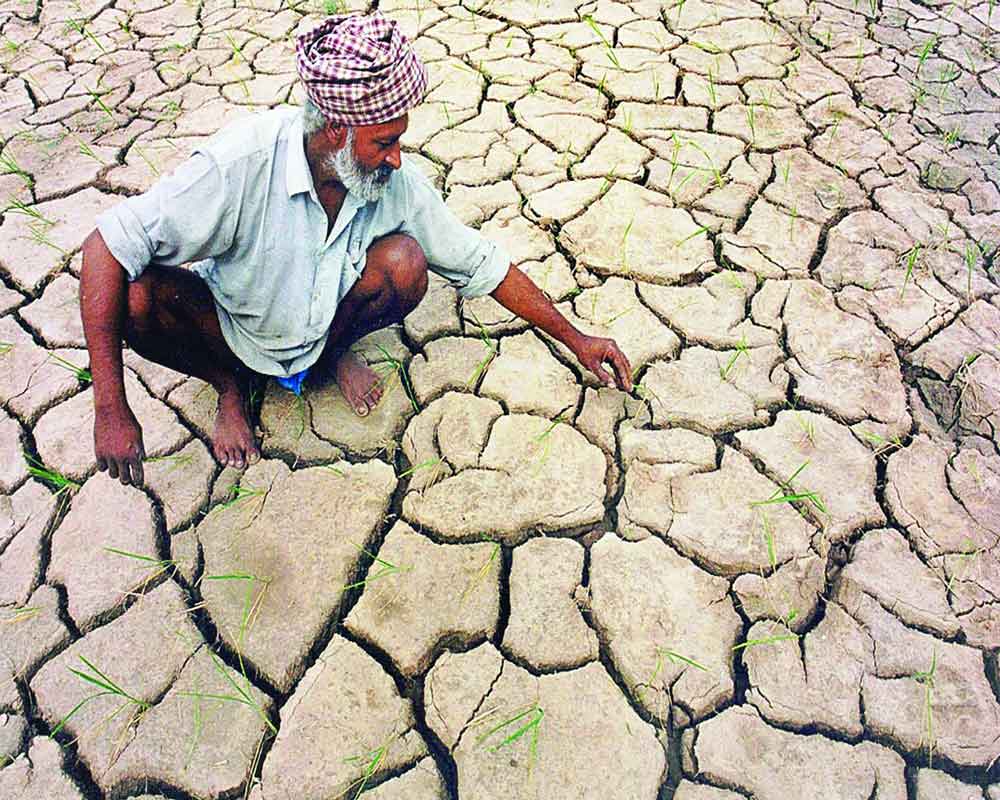
Aerosols increases Drought Severity
by Kota Sriraj / 12 September 2019The combined effect of El Niño and aerosols reduces rainfall markedly over the sub-continent and intensifies the severity of droughts by as much as 17 per cent, as compared to the individual effect of a warm ocean current
Aerosols, tiny solid particles or liquid droplets suspended in the atmosphere, are rapidly becoming the ubiquitous factor in environmental degradation and pushing up the frequency of droughts across the world, especially in India. They can come from natural sources, like dust or wildfires, or man-made sources such as vehicles and industrial emissions.
A team of atmospheric scientists from India, USA and Canada found that aerosols in the atmosphere can increase the severity of droughts in the Indian subcontinent by as much as 17 per cent during El Niño years.
The El Niño phenomenon, which occurs when there is abnormal warming over the Pacific Ocean, is already considered detrimental for the monsoon as it blocks the flow of moisture-bearing winds from the oceans to the Indian landmass. A new study by Indian Institute of Tropical Meteorology (IITM) Pune found that it further weakens the monsoon by transporting aerosols from lower altitudes in the East Asian region up and into the higher altitudes of about 12-18 km, forming an aerosol layer called the Asian Tropopause Aerosol Layer (ATAL) over the South Asian region.
It remains suspended there during the monsoon and its thickening cuts solar energy to the Earth. This in turn weakens monsoon circulation and increases the severity of drought conditions.
The study, published in the Scientific Reports journal, reveals that the combined effect of El Niño and aerosols reduces rainfall over the Indian sub-continent as compared to the individual effect of El Niño. Going by the satellite readings and a series of model simulations in the report, the severity of droughts during El Niño years over the sub-continent has amplified by 17 per cent.
Noting that in recent decades there has been an increase in the frequency of El Niño events and droughts over India, the researchers warned against any further increase in industrial emissions from both East and South Asia as they can lead to a wider and thicker aerosol layer in the upper troposphere and further intensify droughts.
Given that India is already vulnerable to hydrological and weather extremes, a higher degree of drought severity will only subject the country to more hydrological stress while affecting agriculture and the livelihood of millions of people.
Reducing aerosol emissions is not only essential for improving air quality but also for controlling droughts and their impact on people in the Indian subcontinent. Rising temperatures, too, are becoming the cause of increase in the concentration of aerosols in the atmosphere that cause air pollution.
According to a recent study by researchers from the University of California, aerosol presence is exacerbating climate change and its adverse effects. While climate change is warming oceans, it is warming land faster, which is bad news for global air quality. The study, published in the journal Nature Climate Change, shows that the land-sea warming contrast drives up aerosol concentration in the atmosphere.
Aerosols not only affect the climate system, including disturbances to the water cycle, they also harm humans, animals and plants as they cause smog and pollution. Their output and emissions are a matter of grave concern.
To rein in these soaring emissions, we need to understand the level of aerosol pollution in India. India needs an aerosol protocol that is able to set the parameters for preventing spread of aerosol emissions. Industries and other man-made sources of aerosol emissions currently have a free run thanks to lack of stringent regulations that set ground rules for operations.
The categorisation of industries and other aerosol-emitting units is critical and periodic checking will go a long way in controlling them. This will have a direct impact on the fight against climate change and help India arrest its worsening environment situation.
(The writer is an environmental journalist)
Writer: Kota Sriraj
Courtesy: The Pioneer
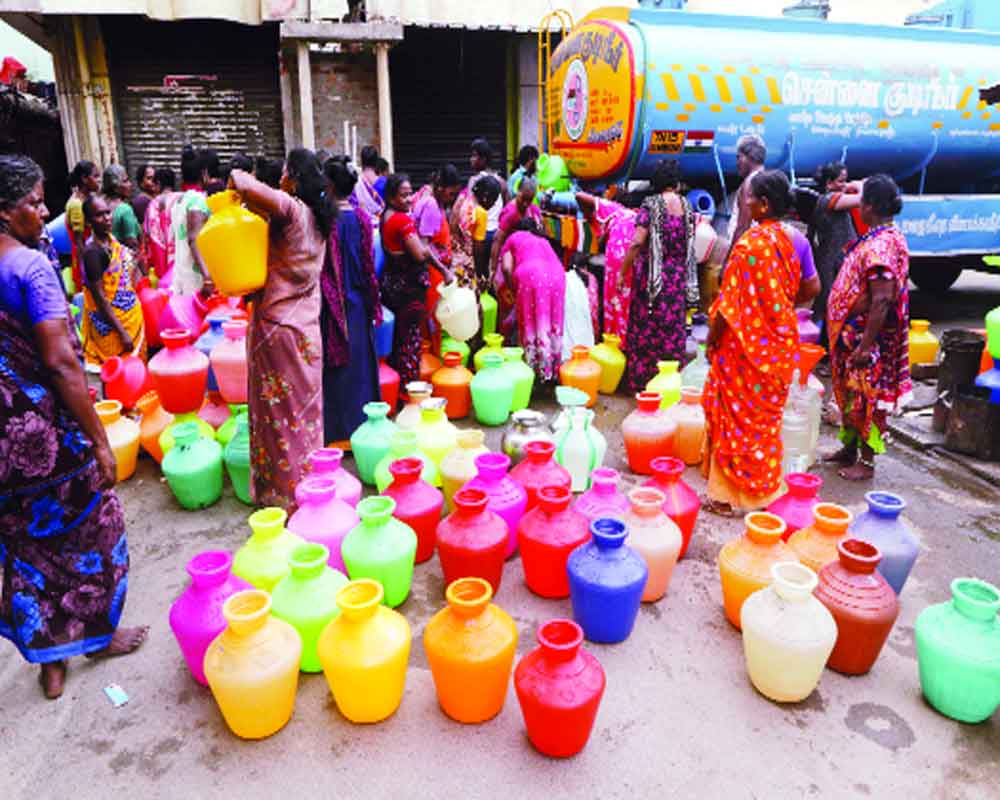
India Facing Worst Water Crisis
by Markandey Katju / 25 June 2019The Chennai water crisis calls for the establishment of a National Water Committee, consisting of scientists, administrators and domain experts
The country is witnessing acute water shortage in many areas either due to the failure of rains or inadequate rainfall. The crisis has been brewing in many States like Tamil Nadu, Karnataka, Maharashtra, Uttar Pradesh, Bihar, Rajasthan, Gujarat and even the national capital of Delhi because of which people are suffering terribly.
In Chennai, women were seen lining up in queues, holding plastic buckets and waiting for tankers, some of which are reportedly fleecing the public. IT firms, restaurants and the construction industry have all admitted that they are struggling without water. Violent clashes between residents on the issue of water sharing, too, have been reported. Meanwhile, reservoirs supplying water to Chennai have all dried up.
A BBC report said, “India is facing its worst water crisis in its history.” India Today stated that “50 per cent” of the country is staring at “drought.” In this connection, this writer had written an article titled, ‘Water Woes’, which was published recently in The Hindu. I also issued an appeal to Prime Minister Narendra Modi to immediately set up a ‘National Water Committee’ consisting of scientists, administrators and other eminent people to deal with the problem on a war footing.
This writer had set up a similar committee by a judicial order as a judge of the Supreme Court in MK Balakrishnan vs Union of India (2009) case under the chairmanship of former Secretary in the Union Ministry of Science and Technology, Thirumalachari Ramasami. In the case of Delhi Water Supply & Sewage Disposal Undertaking vs State of Haryana (1996), the Supreme Court observed, “Water is a gift of nature. Human hand cannot be permitted to convert this bounty into a curse, an oppression.” However, scant notice was given to this admonition and the natural resource has been converted into precisely that.
When this writer was the Chief Justice of the Madras High Court (2004-2005), a Bench, presided over by him in L Krishnan v. State of Tamil Nadu (2005), noticed that most of the lands marked in the revenue records of the State as ponds or lakes had been encroached upon. Many houses and illegal shops were built on them. The Bench directed the removal of all illegal encroachments. It is doubtful if the order was effectively implemented by the authorities. In Karnataka last year, a piquant situation cropped up. While in the coastal and Malnad region as also some districts of the State, the rain fury wreaked havoc, other regions, especially the northern part of the State, witnessed drought-like situation during the same time. This was unbelievable.
China, too, experienced a similar situation before the 1949 Revolution. Some areas (those next to Hwang He, also known as the ‘river of sorrow’) experienced frequent floods, while others experienced drought. After the Chinese Revolution of 1949, the authorities constructed huge dams on these rivers. Canals were built to carry excess water to drought-hit areas. This way, flood as well as the drought problem was solved. Why could this not have been done in India, too?
States along the coastal lines have access to unlimited sea water but it needs to be desalinated. Desalination methods like reverse osmosis are extremely expensive. But with the help of scientific research, inexpensive methods can be found out. The Himalayas, too, have almost unlimited water in the form of snow but it needs to be harnessed properly. Other techniques like rain water harvesting must be made mandatory in all human settlements. All such efforts call for a strong political will — on the part of the Central as well as State Governments — using scientists (both Indian and foreign). Unfortunately, this will was missing until now.
Now that his Government has a mandate, it is hoped that Prime Minister Narendra Modi will not miss this opportunity. He should immediately set up the National Water Committee, giving it adequate funds and other support.
(The writer is a former Judge of the Supreme Court)
Writer: Markandey Katju
Courtesy: The Pioneer
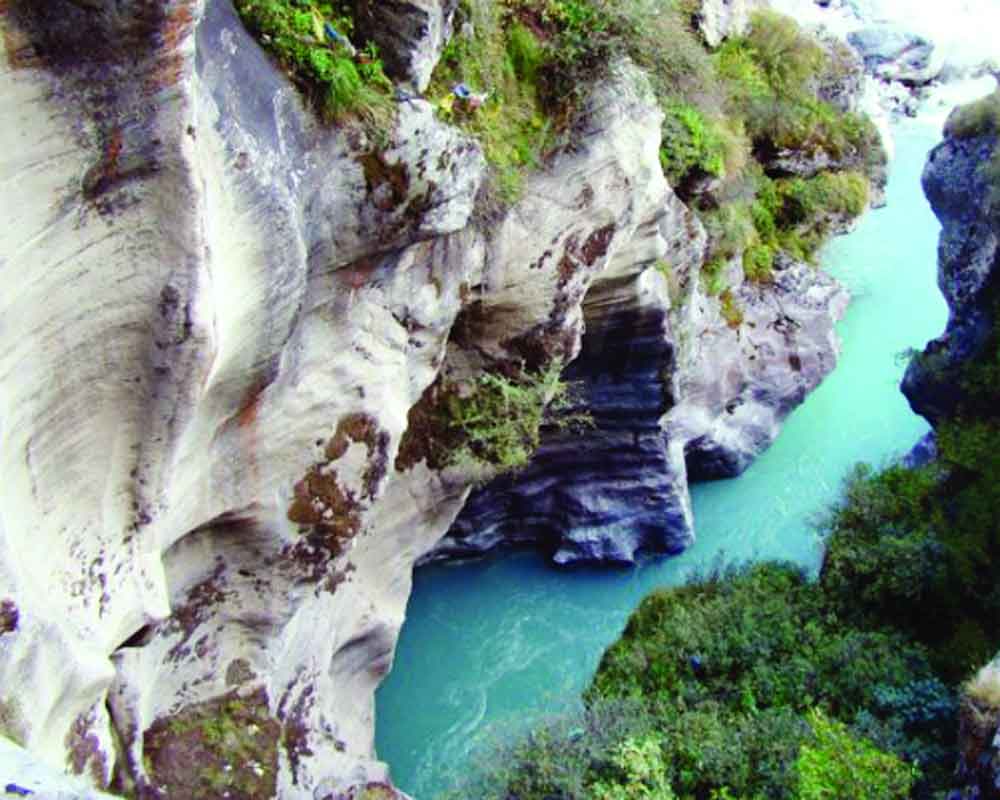
Saraswati : A Mythical River
by Dr KK Paul / 28 May 2019The Saraswati might have been a myth for some but satellite imagery clearly shows that such a river system did exist in line with present-day Ghaggar and had a very wide basin right up to the Rann of Kutch. It was linked to the Sutlej
River valleys over the centuries have cradled and nurtured some famous civilisations. For obvious reasons, this pattern has continued and even today most of the large cities continue to flourish on the river banks. Excavations and discoveries undertaken by Sir Mortimor Wheeler during the earlier decades of the last century unravelled the secrets of the Indus Valley civilisation hitherto lying buried under centuries of history.
We may have known about the Indus Valley civilisation much earlier had the original discoveries by Charles Mason, a noted archaeologist in the 1820s, been given more serious consideration. It may come as a surprise but some of the Harappan sites around the Indus are known to have been pillaged by contractors for brick ballast to build a portion of the Lahore railway in the later half of the nineteenth century.
Archaeological evidence shows that Indus was highly prone to floods and frequent changes of course. As the sister river to the Indus, the Mihran also carried large volumes of water along a course parallel and eastwards of Indus. But over the millennia, the Mihran has ceased to exist, so also the towns on its banks. In later studies, the Mihran came to be identified with Hakra as well as the Saraswati (also extinct).
Recent (May 2019) excavations reported from Ganweriwala indicate the town to have been located on the banks of old river Hakra, often cited as the mythical Saraswati. There has been a renewed interest in the recent years in river Saraswati, as the department of culture has initiated a project for research on satellite imagery to ascertain and chart out the entire route of this ancient river. It would be in the general area of the present states of Haryana and Rajasthan that evidence would be attempted to be collected to ascertain whether the civilisation around the Saraswati was an extension of the Indus valley or vice versa.
The mythical Saraswati River, which is now extinct, has found wide mention in the Puranas and ancient Indian history. The Skanda Purana mentions that the Kanyakubja Mahadesh of Bhoja, comprising 36 lakh villages, extended up to Kurukshetra and Saraswati. In the Rigveda, a river course has been mentioned, which now corresponds to the Saraswati and Ghaggar. The Saraswati has been mentioned as a mighty river from the pre-Vedic times. By the time the Manusmriti and the Mahabharata came to be written, it had already developed its present character. Manu calls the place where it disappears as Vinasana. The Mahabharata states that after disappearing, the river reappeared at three places. It disappears in sands near the village of Chalaur and reappears at Bhavanipur. At Ballchapart, it again disappears, only to appear again at Barakhera. At Urnai, near Pehova, (ancient Prithudaka), it is joined by the Markanda stream. At Sirsa (ancient Sairishka), it is joined by Drishavadi or Chitang.
The area between the Saraswati and Drishadvati is known to be the sacred land of Brahmavarta, the home of the Vedic rishis. After disappearing, the dry bed reappears south of Rohri and runs parallel to the Indus into the Arabian Sea, which is analogous to the ancient Mihran Hakra System. The other cities of the Saraswati era were Kapishthala (Kaithal), Sonaprastha or Sonepat and Paniyaprastha or Panipat.
Reports of the appearance of sweet water in certain dry areas of Kutch after the earthquake also led to a revival of interest in the archaeology of the Indus Valley and the impact of tectonic movements on the river systems. It is widely believed that the Saraswati river system may have become dry on account of one such upheaval. There is sufficient data to show that the original course of the Sutlej was to follow a southward flow from Ropar (Punjab) towards the Ghaggar, the two coming together near Shatrana in Sangrur district and then flowing towards Kutch. The sharp bend and a directional change at Ropar, which is extremely unusual considering the flat terrain, may appear to have been possible on account of a tectonic uplift. This may have led to the ultimate drying up of the Ghaggar-Saraswati system as Sutlej was the only perennial source of water in the area, which may have changed course due to an earthquake.
That the Sutlej was earlier joined to the Ghaggar-Saraswati system is also borne out from a legend in the Mahabharata, where it is mentioned that Vashistha threw himself into the Sutlej to commit suicide. The Saraswati might have been a myth for some but satellite imagery clearly shows that such a river system did exist in line with the present day Ghaggar, and had a very wide basin right up to the Rann of Kutch.
Another interesting feature of the ancient history of this area is the speculation on the possible linkage between the Harappan civilisation and the Gangetic plain. Is it that the river Saraswati could provide the missing link? Only forthcoming research would be able to decipher this centuries-old secret whether Saraswati was originally joined by Sutlej or by river Yamuna, both these rivers having changed course centuries ago.
(The writer is a former Commissioner of Police, Delhi)
Writer: Dr KK Paul
Courtesy: The Pioneer
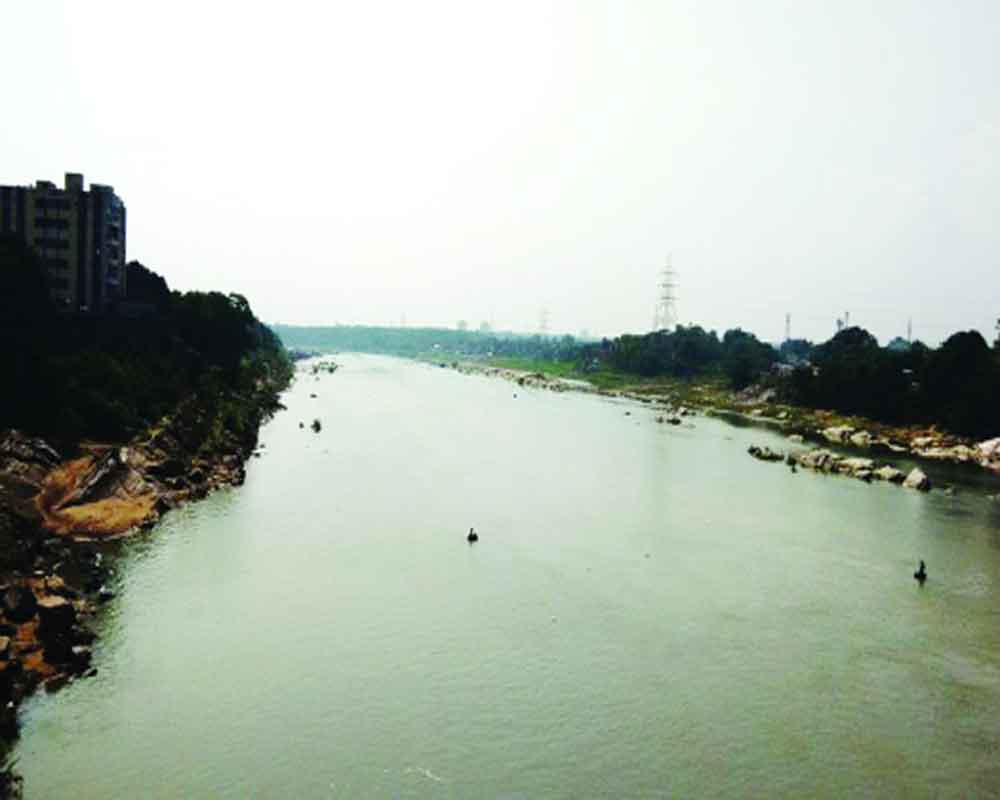
Quantifying water needs in India..
by Soumi Roy Chowdhury / Devendra B Gupta / Sanjib Pohit / 18 May 2019According to Soumi Roy Chowdhury, Devendra B Gupta and Sanjib Pohit, “The value of a river will depend on a unique data-set to construct the water poverty profile and experts who can suggest future correctives” In India, water is rarely a focus area in the discourse about new pathways for development. The narrative generally centres on two things: First, the availability of water and second accessibility to good and safe drinking water. Public policies largely focus on the latter even as the Government launches flagship programmes like Namami Gange and National Rural Drinking Water Programme.
But to be able to measure societal impact of any given programme, it is important to have baseline and end line information. In this case, how river water scarcity or its quality impacts common households. Specially, information on the use of water, livelihood aspects and quantifiable aesthetic value of the river are of utmost importance to gauge value.
Such information is, however, sparse and available only for pilot projects. Further, no serious efforts have been made to compile them for better identification of water- stressed regions, especially in the Indian context. However, efforts are under way to create a data-driven policy-making in our country.
With the launch of the Composite Water Management Index developed by NITI Aayog, one gets a sense of the macro picture of the effectiveness of water management across various States. Efforts like these must, however, be complemented with information linking household welfare, understanding livelihood implications of water scarcity and the degree to which it impacts human population. All of these can succinctly bring disparate data sources together.
Further, river basins in India are of different sizes, with habitation and livelihood depending on it. Therefore, analysing the communities living off the basin is critical to take into account both the physical and socio-demographic factors associated with water scarcity. A water poverty index approach is appropriate for such an analysis as it can monitor both the availability of water as well as the socio-economic factors that hinder the use and access of the same.
Elsewhere in the world, water poverty index, a relatively newly introduced policy tool, has caught the attention of policy-makers in the realm of water-driven issues. However, it is yet to catch the attention of Indian researchers and legislators.
The concept is based on the premise that the lack of adequate water supply in a country can lead to poor health of its population, whereas despite its availability, it is the user cost of clean water that can drive one to use inadequate and unreliable sources of water supply.
Therefore, a country, which is water-scarce should encompass understanding of different inter-related components: The availability of internal water resources and external water inflows followed by access to safe water and sanitation in the region. Equally important is to capture the share of regional water use for domestic, industrial and agricultural purposes.
Scientific measurements of water quality parameters are equally critical to understanding the role of different kinds of regulatory mechanisms to preserve the water body, including biodiversity threats.
Last but not the least, the socio-economic ability of availing clean water resources and status of health information constitute the much-needed water data for a comprehensive analysis. The applicability of this kind of measure goes beyond just ranking the regions, which is the usual reporting norm, but actually categorising the components. Targeted approach allows diagnosis of the source of water problem and helps identify those policy parameters that need more attention.
Indeed, this is by no means a simple task that can be accomplished easily. An interdisciplinary team of researchers is needed to understand and analyse the water poverty index of a river basin. More frequently, it happens that data is not available at the adequate level in India. For example, scanty information is available on water scarcity or how the poor quality of the same impacts the health and developmental goals of the people in various communities across river basins.
In sum, working towards a unique data-set to construct a water poverty measure will require hydrologists, who can advise on the water flow and availability, scientists who can develop water quality measures and social science researchers, who can assess the information on the use and implications of river water usage, including health costs, economic costs and other socio-demographic linkages.
(The writers are Associate Fellow and Professors at National Council of Applied Economic Research (NCAER), New Delhi. Views expressed here are personal)
Writer: Soumi Roy Chowdhury, Devendra B Gupta and Sanjib Pohit
Courtesy: The Pioneer
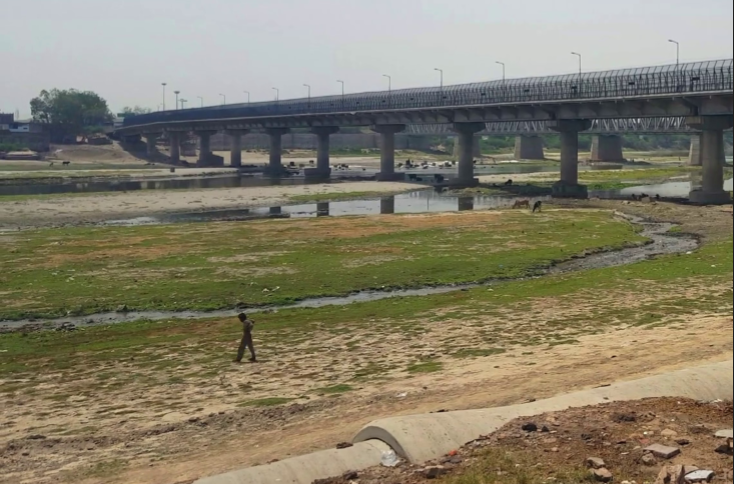
THE SACRED, OR PERSECUTED?
by Opinion Express / 14 August 2018The holy river crying for policy-makers’ attention
The Yamuna river is highly venerated in the Hindu religion and is worshipped as goddess Yamuna, further the river marks its relevance as the daughter of the Sun God and the sister of Yama, the god of death. The river is so holy in Hindu religion, it is strongly believed that bathing in its sacred waters frees one from all sins. The parody is as such that the holy waters of the river is being abused in such a manner that the river is suffering and in connection the lives of the people is getting affected too.
For a long period of time the holy river Yamuna has been the lifeline for Delhi. From a pristine water course that was mesmerised by the Mughals it now meanders wearily loaded with pollutants.
The major cause of pollution of the river Yamuna is basically related to the religious practices that are carried out by the people in day to day lives. Yamuna is a river which passes cities whereby a lot of religious institutions are present like for an instance vrindavan, people in Hindu religion whereby the holy river is thought to be as a place whereby offerings are to be made and this is a general adopted practice by the Hindus.
A recent judgement by the Uttarakhand High Court, the division bench states that rivers Ganga and Yamuna, all their tributaries, streams, every natural water flowing with flow continuously or intermittently of these rivers, as juristic/legal persons/living entities having the status of a legal person with all corresponding.
This judgement by the Uttarakhand High Court has not only mentioned that the river Yamuna is a living entity but also has to protect the river Yamuna.
River pollution is a big menace to the environment and of course human health too, the other factors related to the contribution in the pollution are the Industrial wastes, mixtures of chemicals, heavy metals are all discharged in water and these are difficult to clean up.
It has been observed on the banks of the river people enjoy the call of the nature which adversely affects the river health.
The Yamuna has been sentenced to the harshest treatment by the humans, the Yamuna is a garbage dump for more than 57% of the Delhi waste thrown into it and only 55% of Delhi’s residents are connected to proper sewage system which negates the other 45% of the population which again remains not properly connected to the proper sewage system. According to Centre for Science and environmental Pollution, around 80% of the Yamuna’s pollution is due to raw sewage.
The river pollution leads to number of health problems and disorders in humans. Not only it affects the human life but also affects the aquatic life, leading to the growth of fishes that are unsuitable for human consumption which further results in mass killing of the aquatic life too. Many economic activities are carried out by the people on these water bodies for an instance fishing and there are people whose livelihood depends on the aquatic life. Further it is not only limited to humans and the aquatic life but also animals and birds who drink the water of the river. After drinking the toxic water of the river mostly the animals, birds, humans and aquatic life suffers disorders and result in their death.
In the long term, if the continuous river pollution continues it will be a threat to the biodiversity and also the extinction of some species can disrupt the ecosystem completely, as we are aware about the chains of the ecosystem.
The rivers situation at present is very alarming and people in their references term it to be a huge sewage canal, its water is unfit for human consumption and cannot be qualified for any use, it cannot even support bacteria or any aquatic life.
At present the government has spent hundreds of crores Indian rupees in the cleaning of these rivers but still the river still remains to flow dirty.
Yamuna enters into Delhi at Wazirabad barrage, it is reflected in the picture P.1, the water stored in left beaker is the water of Yamuna before entering Delhi and the water stored in the right side of the beaker is the water of Yamuna after entering Delhi.
It seems that human activity is the major cause by which the river Yamuna is killed, the colour of the water has turned completely black which contains heavy metals, toxic metals, pesticides and nuclear wastes and which results in destruction of the properties of water, the oxygen level of the Yamuna water remains to be zero.
The very first solution of this problem has been mentioned in this article itself whereby it is important to know the stakeholders to the particular issue, once the stakeholders have been identified the responsibility of the cleaning of the river Yamuna can be shifted to them.
Dozens of countries have established regulatory bodies for instance in some states of U.S the regulatory bodies are public Utility Commission, in england and Whales a regulatory body was created OFWAT in 1989, and many countries choose for privatization for the concern of water management which India should also implement.
The another is “awareness”, once the government is successful in creating the awareness that the river contributes a lot to the people and it is their duty to protect it the pollution level will go tremendously down. The government should formulate policy by making field research and identify the polluters and apply the concept of Polluters Pay Principle.
(Ankit Kishore is a law student School of Law, KIIT University)
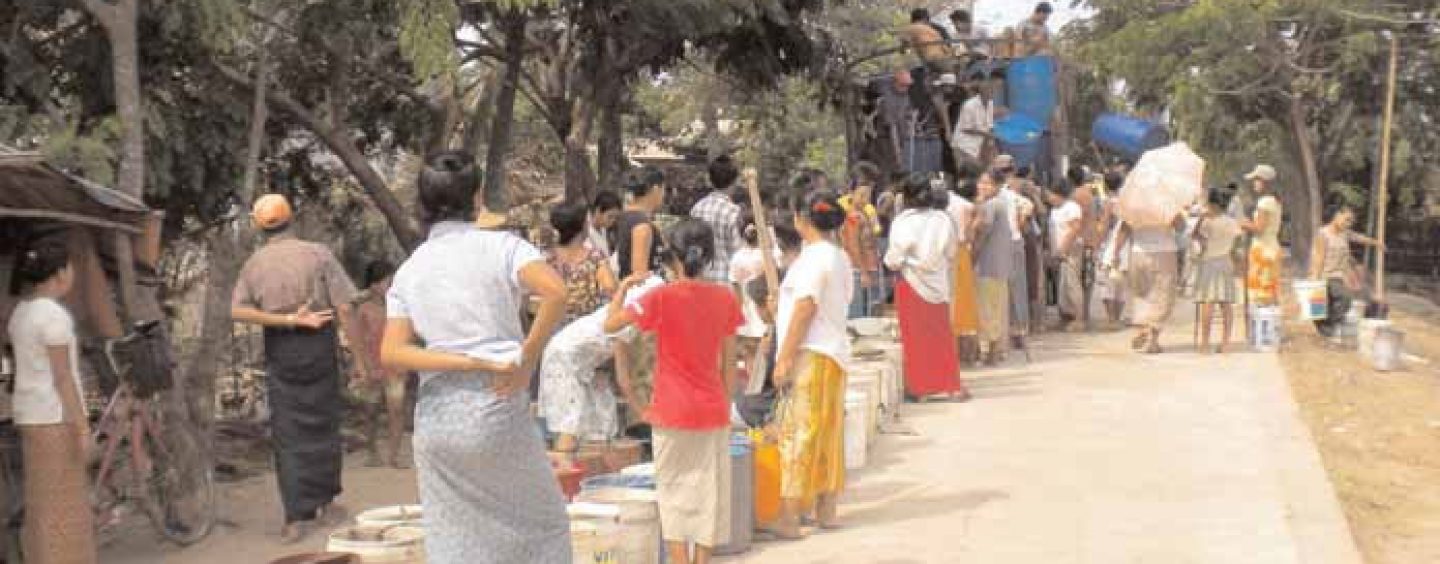
Can we have water-less agriculture too Mr. PM?
by Opinion Express / 28 September 2017We need a master plan to increase our water storage capacity, improve irrigation facilities and create water networks across the country that links the draught prone with those experiencing floods. Water is one crucial factor that sustains life on earth. Yet we take water for granted unless of course reminded of its importance by Bollywood actors celebrating water-less Holi. India is estimated to have a mere 4 per cent of global water resources, while it has to support 16 per cent of the world’s population. Merely by that equation India is water stressed if not water starved.
Billion Cubic Metres (BCM) of which three-fourth get precipitated during the monsoon season (June to September). Of this 4000 BCM, it is estimated that approximately 1120 BCM are only utilisable. That in turn adds to the stress. When rains fail, this situation gets compounded. For instance, the rainfall in 2009 in India was a mere 78 percent of the long-term average rainfall. A 22 per cent shortfall is disastrous in such a situation. Coincidentally the UPA under Manmohan Singh was reelected only in May 2009. Was Mother Nature warning us?
Similarly in 2012 we faced “drought like” situations in several parts of India as rainfall was 92 per cent of the long term average. This brings in another dimension to our water crisis. When it rains, it pours during the monsoon. For instance in 2012 nearly 58 per cent districts recorded excess rain causing flood (the balance 42 per cent face moderate to severe shortfall).
It is in this connection that the National Water Policy notes that the availability of water is highly uneven in both space and time. Precipitation is confined to only about three or four months in a year and varies from 100 mm in the western parts of Rajasthan to over 10,000 mm at Cherrapunji in Meghalaya. No wonder India alternates between floods in some part and drought in other. The challenge is to link the two.
Dream remained as one
That takes me to the Budget of 2004-05 where finance minister P Chidambaram said, “I now turn to one of my big dreams. Water is the lifeline of civiliyation. We have been warned that the biggest crisis that the world will face in the 21st century will be the crisis of water.
“And his response to this “crisis?” “I therefore propose an ambitious scheme. Through the ages, Indian agriculture has been sustained by natural and man made water bodies such as lakes, tanks, ponds and similar structures. It has been estimated that there are more than a million such structures and about 500,000 are used for irrigation. Many of them have fallen into disuse. Many of them have accumulated silt. Many require urgent repairs.”
Absolutely spot on I thought.In fact his proposal captured the imagination of the entire nation then. Proposing to launch “a massive scheme to repair, renovate and restore all the water bodies that are directly linked to agriculture” the FM sought to begin “with pilot projects in at least five districts” one district in each of the five regions of the country.
And once the pilot projects were completed and validated, the government was to “launch the National Water Resources Development Project and complete it over a period of 7 to 10 years.” In conclusion, the FM added “It is my hope that by the beginning of the next decade all water bodies in India will be restored to their original glory and that the storage capacity of these water bodies will be augmented by at least 100 per cent.”
Once again in his Budget speech of 2005-06 the FM visited the subject albeit briefly. The zest that was palpable the previous year was missing. The grand announcement of July 2004 for a pilot project when the Budget was presented was still on the drawing board and expected to be “launched in the month of March 2005.”
That was the last time I heard of the FM speak of his “big dream.” The promise made almost a decade ago on the floor of the Parliament on augmenting the storage capacity of water bodies “by at-least 100 per cent” remains unfulfilled even to this day. So much for government’s concern for farmers, agriculture and creating basic rural infrastructure!
Now to the second leg of the water problem – the need for irrigation facility as delivery mechanism. Once again the FM was spot on with his diagnosis. “The Accelerated Irrigation Benefit Programme (AIBP) was introduced in 1996-97 and was allotted large funds year after year. Yet, out of 178 large and medium irrigation projects that were identified, only 28 have been completed.” Therefore the UPA government came with a practical proposal to “restructure” AIBP by ensuring “truly last mile projects that can be completed by March 2005 will be given overriding priority, and other projects that can be completed by March 2006 will also be taken up in the current year.”
Well did the government restructure AIBP? The answer lies in the Budget speech of Mr Pranab Mukherjee of 2012 where he adds, “To maximize the flow of benefits from investments in irrigation projects, structural changes in AIBP are being made.” Readers may note the change in semantics: “restructure AIBP” of 2005 had become “structural changes in AIBP” by 2012!
Despite all the bluster of the FM in his Budget, the fact remains that the irrigated land as a percentage to total agricultural land in India has improved marginally between 31.6 per cent in 2004 to approximately 37 per cent in 2011. This eloquently captures the neglect of irrigation in India by UPA to this date.
The great Indian rope trick
It is in this connection that a target of creating an additional “irrigation potential” of 10 million hectares (mha) between 2005-06 and 2008-09 was fixed. Interestingly, data with the ministry of water resources claim that the government “achieved” a physical target of 7.3 mha.
How much of this was “actually” achieved and resulted in improving farm production is anybody’s guess. Yet till 2012 since its inception in 1996 the AIBP has an outlay in excess of Rs 55,000 crores either as central grant or loans. While the sums do indeed look massive the fact remains the overall accretion to agriculture lands under irrigation has not improved significantly. Pointing to this anomaly Harish Damodaran in a well researched article in The Hindu Business Line pointed out (March 6, 2007) despite the Centre spending a total of Rs 20,598.48 crore (Rs 205.98 billion) under the AIBP, with the states releasing an additional Rs 15,000 crore (Rs 150 billion) or so since its inception in 1996.
So how much of new “irrigation potential” has been created under the AIBP? According to Harish Damodaran, “The cumulative figure from 1995-96 to 2005-06 comes to 4.04 mha, with another 0.9 mha estimated to be creat- ed this fiscal. All that adds to some five mha over a 11-year span.” While the physical accretion is minimal the amount spent on AIBP is indeed gargantuan. It is in this connection the Comptroller and Auditor General of India (CAG) in its Report No. 15 of 2004 (Civil) commented among other things, it noted that over 35 of the expenditures under AIBP were “diverted, parked or misutilised.”
In short, as the joke goes amongst economists, AIBP is neither accelerated nor does it benefit farmers. At best it is yet another avenue for loot and scoot. That explains why states like Maharashtra despite having several such irrigation schemes, funded both by the state and central government, is perennially water starved. And that would include Rajasthan, Tamil Nadu, Karnataka and Orissa amongst others.
This in turn leads to farm stress and resultant suicides which in turn trigger another round of committees, reports, schemes, programs and once again loot. It may be noted that India is experiencing its fourth drought in a dozen years. Needless to emphasize, this raises concerns about the reliability of the country’s primary source of fresh water, the monsoon rains. Scientists warn that such trends are likely to intensify in the coming decades because of climate changes caused by the human release of greenhouse gases.
India with large sections of poor is extremely vulnerable to such weather patterns. We need huge quantities of food to feed our population. For that we require water. So would our industry which is expected to grow exponentially. Weather patterns show remarkable departure from the past if it is drought in one part of the country we will have floods. Either way it is a disaster.
Ideally we need a master plan to increase our water storage capacity, improve irrigation facilities and create water networks across the country that links the draught prone with those experiencing floods. Unfortunately the decade of UPA rule, like so many other spheres been a disaster on water management too. Will someone tell the PM that we can have a water-less Holi but not water-less agriculture? Will someone educate the PM that a sustainable development model depends on something as elementary but as crucial as water. For too long we have ignored this fundamental fact. The water-less Holi was a rude wake up call.
– OE News Bureau
FREE Download
OPINION EXPRESS MAGAZINE
Offer of the Month







